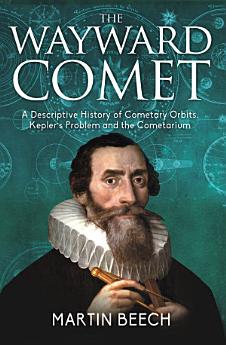The Wayward Comet: A Descriptive History of Cometary Orbits, Kepler's Problem and the Cometarium
Jan 2016 · Universal-Publishers
5.0star
1 reviewreport
Ebook
218
Pages
family_home
Eligible
info
reportRatings and reviews aren’t verified Learn More
About this ebook
Comets have not only blazed across the celestial vault throughout human history, they have embellished the night sky since the Earth itself formed some 4.5 billion years ago. Comets were among the first-born solid bodies in the solar system, and their frozen nuclei tell of the primordial chemistry and chaos that ultimately resulted in the formation of the planets, the evolution of life and us. For all this, however, comets have long been celestial oddities: they baffled our distant ancestors, and human society continues to marvel and speculate wildly at their appearance even to the present day. Cutting against the perceived constancy of the stars, comets seemingly present themselves at random times and they are often interpreted as harbingers of terrestrial change - both good and ill. How then are we to tame the comet: where do they form, how do they move, and can their appearances be predicted? Such questions have preoccupied astronomers for centuries but comets have only gradually allowed the secrets of their wayward flight to be revealed. In this book I explore the historical struggle to understand not only the place of comets within a societal context, but also the scientific quest to make their paths amenable to mathematical certitude. The latter narrative is the more technical in content, but it took tactile form with the invention, in 1732, of the cometarium, a mechanical device to demonstrate the first two of Kepler's planetary laws. And, this development was later paralleled, in the mid to late 19th century, by the development of various mechanical devices (analog computers) to help obtain solutions to Kepler's Problem - the problem which asks, exactly where in its orbit is a given comet at some specific set time. The telling of the wayward comets story covers the past two millennia of human history, and it takes us from the phenomenological musings of Aristotle, through the exactitude of Newton's gravitational theory and calculus, to the truly incredible study of comet 67P/Churyumov-Gerasimenko, by the European Space Agency's Rosetta spacecraft, in the modern era.
Ratings and reviews
5.0
1 review
About the author
Associate professor of astronomy, and Head of the Astronomy Department at Campion College, The University of Regina. My main research interests during the past decade have focused on the smaller objects within the solar system (comets, asteroids and meteoroids), but concomitant to this I have continued to perform research related to the structure and evolution of stars (the area of my doctoral studies). The book being proposed here is partly based upon a series of research papers that I have published over the years and on material used in a solar system studies class. The topic of asteroengineering was recently the focus of an a ~opinion articlea (TM) I wrote for the May 2006 issue of Astronomy Now magazine, and an editorial piece in the May 2006 issue of Smithsonian Air and Space magazine.Home web page: http: //hyperion.cc.uregina.ca/~astro/mbeech.html
Rate this ebook
Tell us what you think.
Reading information
Smartphones and tablets
Install the Google Play Books app for Android and iPad/iPhone. It syncs automatically with your account and allows you to read online or offline wherever you are.
Laptops and computers
You can listen to audiobooks purchased on Google Play using your computer's web browser.
eReaders and other devices
To read on e-ink devices like Kobo eReaders, you'll need to download a file and transfer it to your device. Follow the detailed Help Center instructions to transfer the files to supported eReaders.






